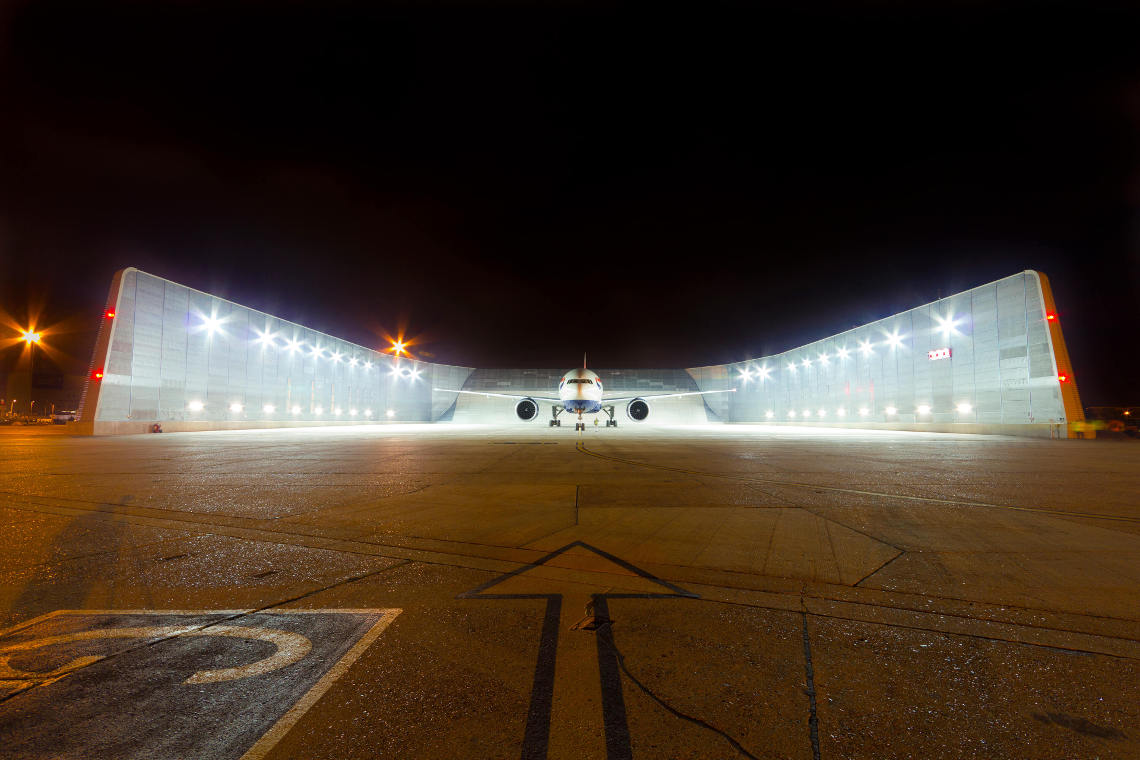Ground Run-Up
IAC Acoustics A/S developed the best-looking and best-performing Ground Run-Up Enclosures. In-depth aerodynamic analysis and the use of new technology has led to the next generation of Ground Run-Up Enclosures.

Ground Run-Up
In an airport, noise control is fundamental. In order to protect the immediate environment from noise from the routine testing of aircraft engines, a Ground Run-up Enclosure (GRE) is used for reducing the noise level and divert heat and turbulent gases.
Next generation of Ground Run-up Enclosure
GRE must be usable as many days a year as possible. Therefore, it must be designed aerodynamically correct. If the GRE is designed incorrectly, this may limit the usefulness either due to a lack of airflow or re-entry of hot exhaust gases from the engines. If the GRE is not usable, it can lead to delays.
With a combination of our extensive experience in test facilities for aircraft engines and advanced computer models, we have developed the next generation of GREs which can handle almost all wind conditions.
GRE can withstand headwind, tailwind and crosswind
GRE is designed to not only reduce engine noise, but also reduce air turbulence and re-entry of exhaust which can otherwise make engines stall. Our researchers have conducted extensive computational fluid dynamics analysis to ensure that our GRE design can withstand headwind, tailwind and crosswind.
IAC Acoustics' GRE is constructed using Jetshield™ and Aerowall™ sections (both patent pending), which consist of rigid steel, concrete and IAC Noishield™ acoustic panels and Powerflow™ silencers.
Jetshield™ rear wall construction
Jetshield™ redirects and accelerates jet streams away from the facility. The direction of air flow and air velocities significantly reduce re-entry and thus helps keep engines running without stopping.
Aerowall™ sidewall construction
Compared to traditional GREs, Aerowall™ sidewalls are specifically designed for extreme performance, both in regard to aerodynamics and acoustics.
Powerflow™ air ducts
Powerflow™ damped vertical air ducts reduce damaging winds and airflow distortion and reduces air turbulence.
Simulations of the expected dampening effect
IAC Acoustics' GREs are not just extremely functional. They are also aesthetically pleasing and can even be coated to match other buildings at the site. The modular construction makes the casing affordable and provides good value for money. A typical project takes 6 months to complete.
During the design phase, 3D simulations and visualisations via 3D Google Earth® photos of the airport area are conducted. This visual presentation gives a very good overview of the GRE's expected dampening effect in relation to the local area
IAC Aviation |
1.6 MB | Download |
